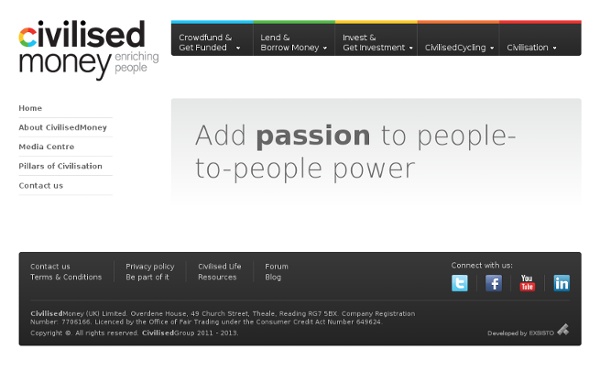



Crowd Funding is the Future of Technology Simply saying that the future of tech is in the cloud only tells part of the story of where the technology industry is heading in 2012. One might say the heart of any startup is in how it receives the funding it needs to get started. With the rise of crowdsourced funding sites like Kickstarter and Pirate My Film, the future of tech may well be in the crowd. More and more companies are turning to the crowd to fund the next big project as the popularity of these community-driven services continues to climb. Finding the funds to make that first big purchase order, get your book published, produce an album, or product a documentary can be rough for you — or anyone — without a direct line to a venture capitalist with deep pockets and a positive outlook on whatever it is you’re trying to accomplish. How Does it Work? Crowd funding is a fairly straightforward process. Jim Young is no stranger to crowd funding sites like Kickstarter. Kickstarter is among the most popular of these sites.
Aflamnah: Crowd-funding creativity From left, Masoud Amralla Al Ali, Lotfi Bencheikh and Vida Rizq. Cairo: This time last year, the global media was in a frenzy with sensationalized catch phrases labeling the Arab revolutions as the “internet uprisings” and “Facebook revolutions.” While technology certainly contributed to their success, the revolutions in Tunisia, Egypt and Libya were not technological revolutions. Social media did not create these revolts, but it did keep the movements alive and connected. Technology allowed the world to watch and spread the onset of protest — it helped link activists, build political networks and galvanize a movement that led to the toppling of autocrats. In a nutshell, technology opened our eyes and enabled the communication needed in the long fight for change, in a region plagued with despotism. Although little has changed in the day-to-day lives of many Arab citizens, innumerable lessons have been learned since the uprisings.
How it works - Appsfunder AppsFunder is a great way to get my new app funded. 1. Tell us the story behind your app. Tell us why your new app is so unique. We also offer you the possibility to pitch your app to our Expert Panel. 2. Okay, we believe you! Your backers can buy a REWARD PACK that you define, or fund to get a REVENUE SHARE to receive a slice of the earnings you make once your app is published on Google Play or the Apple Appstore. I'm into it! 3. Spread the word! 5. Great, you made it! We send you the full details of all funders that backed your project with a reward pack, so you can start organizing the fulfillment of the rewards you offered.For the payback of your funders that opted for a revenue-share based funding, we will ask you to grant us access to your account on iTunes Connect or Google Play. You continue making money on the appstore as normal as soon as your backers have been paid. OK, let's get started!
P2P Lending and Crowdfunding – Explore the New Frontier for Small Business Lending P2P Lending and Crowdfunding – Explore the New Frontier for Small Business Lending Looking for capital to start or grow your business? Sometimes, even with a solid idea and business plan, finding third party financing can be a challenge for many small business owners. So where are startups and growing businesses finding the funds they need? According to a Kauffman Firm Survey, one-third of young firms do not use capital injections. But if you don’t have savings to fall back on, another financing option worth considering is peer-to-peer lending or crowdfunding (also known as crowdsourcing). What is Peer-to-Peer Lending? Peer-to-peer-lending (P2P) essentially involves sharing your idea to other people in hopes they will invest in your business. What’s in it for the investors? Obviously, you can’t just cross your fingers and hope for the best when you post your listing. P2P lending sites are also a useful way to structure loans from friends and family. What is Crowdfunding? Related Resources
Crowdfunding, Micropayments and Publishers ©Naveen Jamal I was reading an article in Fast Company about the launch of Emphas.is and came across an aspect about the model that I really hadn’t thought much about – the role and opportunity for publishers. Publishers, too, if they take a shine to a project on the site, can secure first publication rights by funding up to 50% of the project. Publishers also, of course, have to pay a negotiated fee for the photographer’s work. It’ll be interesting to see what stories get picked up by large publications. Emphas.is, Kickstarter and the rest are primarily funding platforms but each has a publishing component built in as well (blogs) which make them content destinations as well. The Evolution of the Platforms Crowdfunding platforms are still very new. I’m certain there will continue to be new crowdfunding platforms launched in the future as well, and I can potentially see how publishers might start to incorporate elements of the crowdfunding model into their business models.
Publishing your own book: discover (you) writing talent | TenPages.com fundafighter.com PledgeBank - Tell the world "I'll do it, but only if you'll help" eureeca.com Rippple: Home